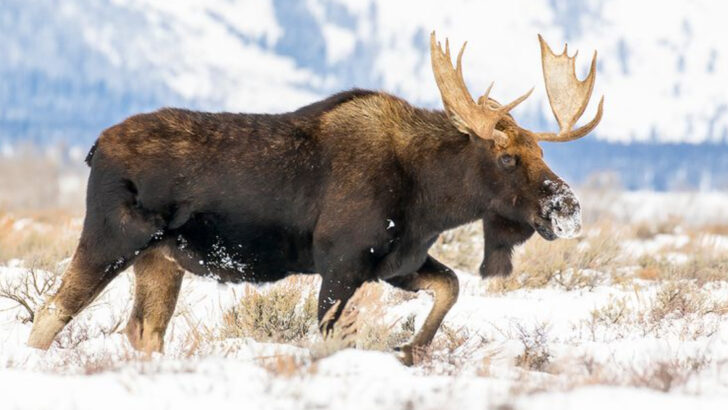Wyoming isn’t just about wide-open landscapes and breathtaking mountains—it’s a kingdom ruled by some of the most iconic animals in North America. From towering bison to elusive mountain lions, this state is where the wild still runs free.
If you think you know Wyoming’s wildlife, think again. Sure, there are cowboys and rodeos, but the real stars? The creatures that roam the forests, rivers, and plains, shaping the land with their presence.
Some are fierce, some are majestic, and others are just downright adorable. But one thing is certain—these 22 animals are what make Wyoming a true wildlife haven.
Ready to meet the untamed heart of the Cowboy State? Let’s dive into the incredible creatures that call Wyoming home.
American Bison
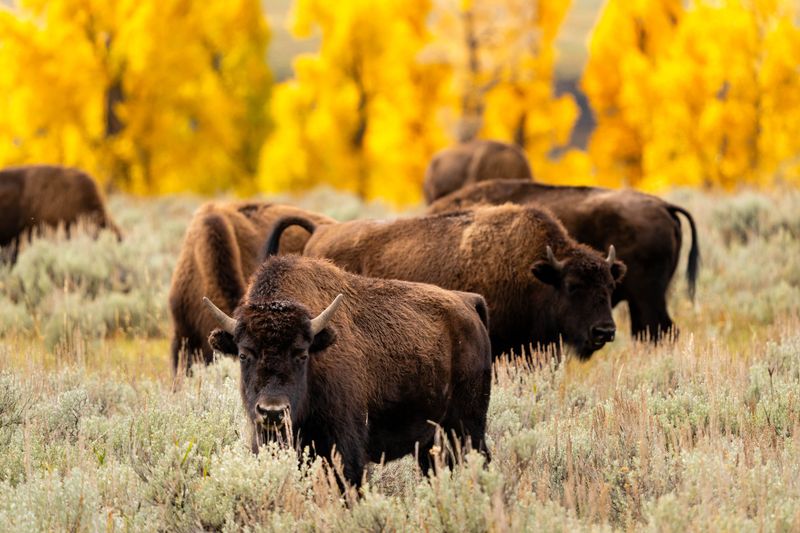
The American Bison, often regarded as a symbol of the American frontier, roams the expansive plains of Wyoming. These massive creatures, with their distinctive hump and tufted tails, are a sight to behold. Standing up to 6.5 feet tall, they are known for their resilience and strength.
Despite their size, bison are surprisingly agile, capable of running up to 35 miles per hour. Observing a herd grazing against the backdrop of a Wyoming sunset is an unforgettable experience. Their presence is a testament to successful conservation efforts, as they once faced near extinction.
Today, they thrive in protected areas, embodying the spirit of the wild West.
Gray Wolf
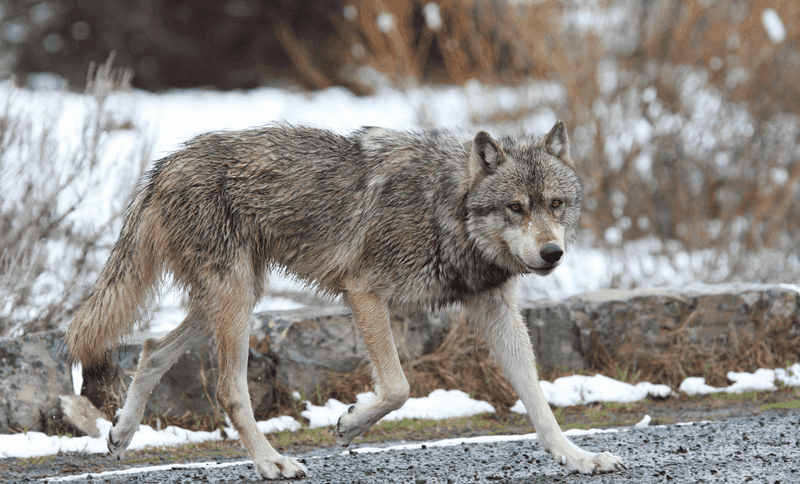
In the secluded corners of Wyoming’s forests, the gray wolf prowls with an air of mystery. These apex predators play a crucial role in maintaining the ecological balance, keeping prey populations in check. Gray wolves, with their striking yellow eyes and thick, bushy tails, are highly social animals, often seen in packs.
Their haunting howls echo through the valleys, a sound synonymous with untamed wilderness. Each pack operates with a complex hierarchy, showcasing unity and teamwork.
The reintroduction of wolves to Wyoming has been a controversial yet vital step toward ecological restoration, proving their indispensable place in the landscape.
Bald Eagle
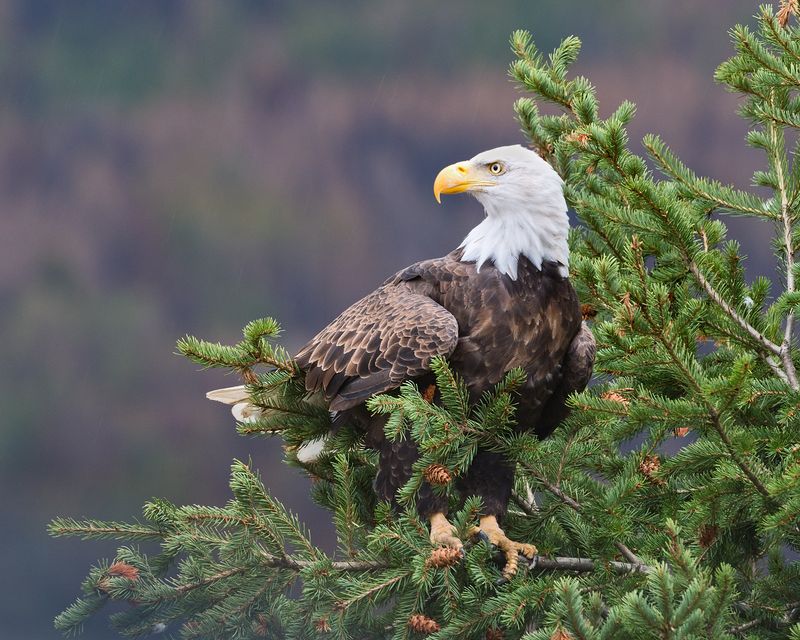
The bald eagle, an emblem of freedom, majestically soars over Wyoming’s rivers and lakes. With a wingspan reaching up to 7.5 feet, these birds of prey are a powerful sight against the backdrop of the azure sky. Known for their keen eyesight, bald eagles can spot prey from great distances.
Their nests, or eyries, are often found high in the trees, providing a vantage point to scout for fish. Watching a bald eagle dive for its catch is a thrilling spectacle.
These raptors symbolize resilience, having bounced back from the brink of extinction, embodying the spirit of survival.
Moose
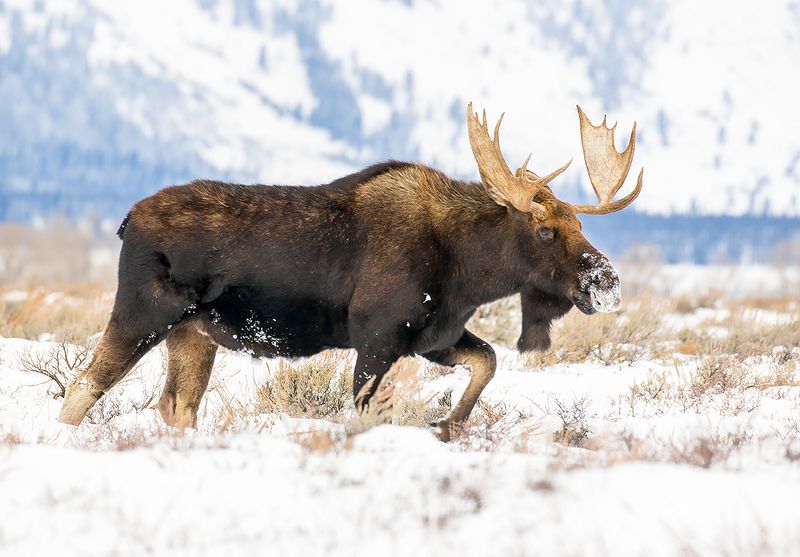
Wyoming’s marshy landscapes provide a haven for the moose, the largest member of the deer family. These solitary giants are easily recognizable by their broad antlers and long, spindly legs. Adult moose can stand over 6 feet tall at the shoulder, and their antlers can span up to 6 feet wide.
Moose are superb swimmers, often seen wading in water to feed on aquatic plants. Despite their size, they can move silently through the forest.
Encountering a moose in the wild is a humbling experience, offering a glimpse into the tranquility of nature. Their presence enriches Wyoming’s diverse wildlife tapestry.
Pronghorn Antelope
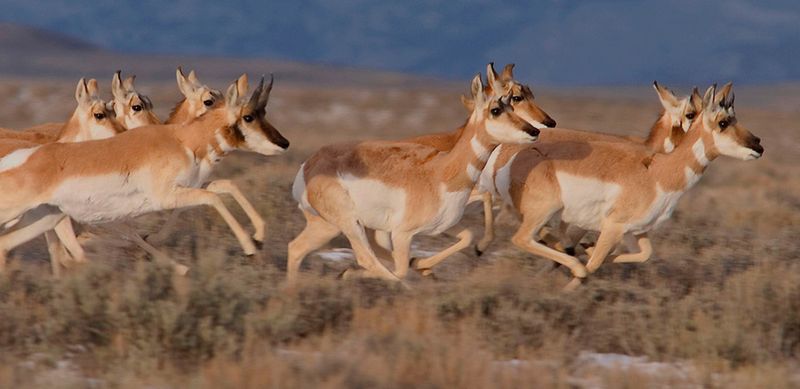
The pronghorn antelope, a speedster of the plains, is often spotted racing across Wyoming’s open landscapes. Known for their incredible speed, they can reach up to 55 miles per hour, making them the fastest land animal in North America.
Pronghorns are easily identified by their unique white and tan markings and elegant, curved horns. They are remarkably adapted to the challenging conditions of the high plains, capable of long migrations in search of food.
Watching a pronghorn sprint is a mesmerizing display of grace and agility, a testament to nature’s engineering marvels. They embody the spirit of freedom and vastness of the American West.
Grizzly Bear
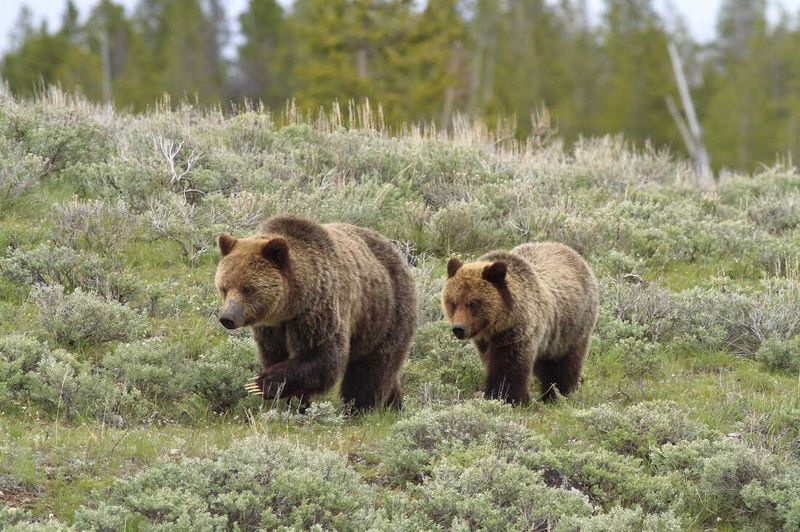
In the rugged terrains of Wyoming, the grizzly bear stands as a symbol of wilderness power. These awe-inspiring mammals are known for their immense size and strength, with males weighing up to 600 pounds.
Grizzlies have a distinctive hump on their shoulders and long claws, adaptations for digging and foraging. Observing a grizzly in its natural habitat, especially during salmon runs, is a thrilling experience.
Their role as apex predators is vital for ecosystem balance, controlling prey populations and spreading nutrients through their foraging habits. Protecting these bears ensures the preservation of Wyoming’s wild heart.
Elk
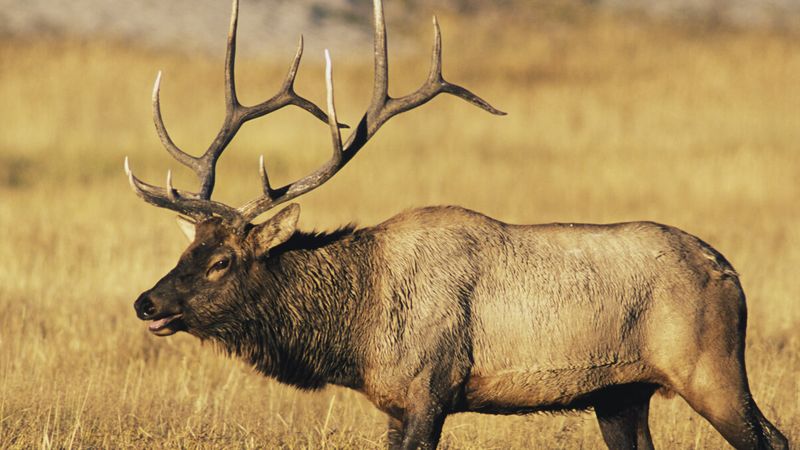
The elk, or wapiti, is a prominent figure in Wyoming’s wildlife scene, especially during the fall rut. During this time, males, or bulls, are known for their distinctive bugling calls, echoing through the forests.
These calls serve as a mating display and a challenge to rivals. Elk are social animals, often found in large herds, offering a spectacular sight against the state’s picturesque landscapes.
With antlers that can grow up to 4 feet, they are a symbol of strength and majesty. Encountering a herd during the fall is a quintessential Wyoming experience, showcasing nature’s dynamic rhythms.
Mountain Lion
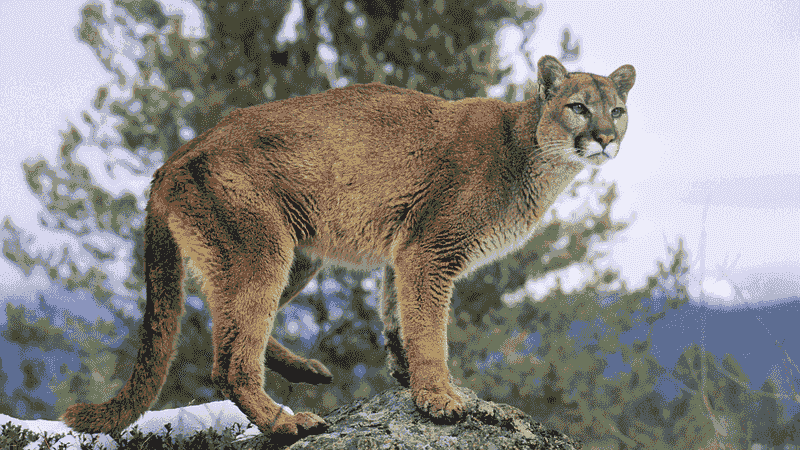
Mountain lions, or cougars, are the elusive shadows of Wyoming’s wilderness. These solitary and secretive predators are masters of stealth, using their muscular build and keen eyesight to stalk prey.
Often seen poised on rocky outcrops, they command the landscape with a regal presence. Mountain lions are adaptable hunters, preying on a diverse range of animals, which they ambush with powerful leaps.
The thrill of spotting a mountain lion lies in its rarity, as these elusive cats are experts at avoiding human encounters. They are a testament to the untamed allure of Wyoming’s wilds.
Great Horned Owl
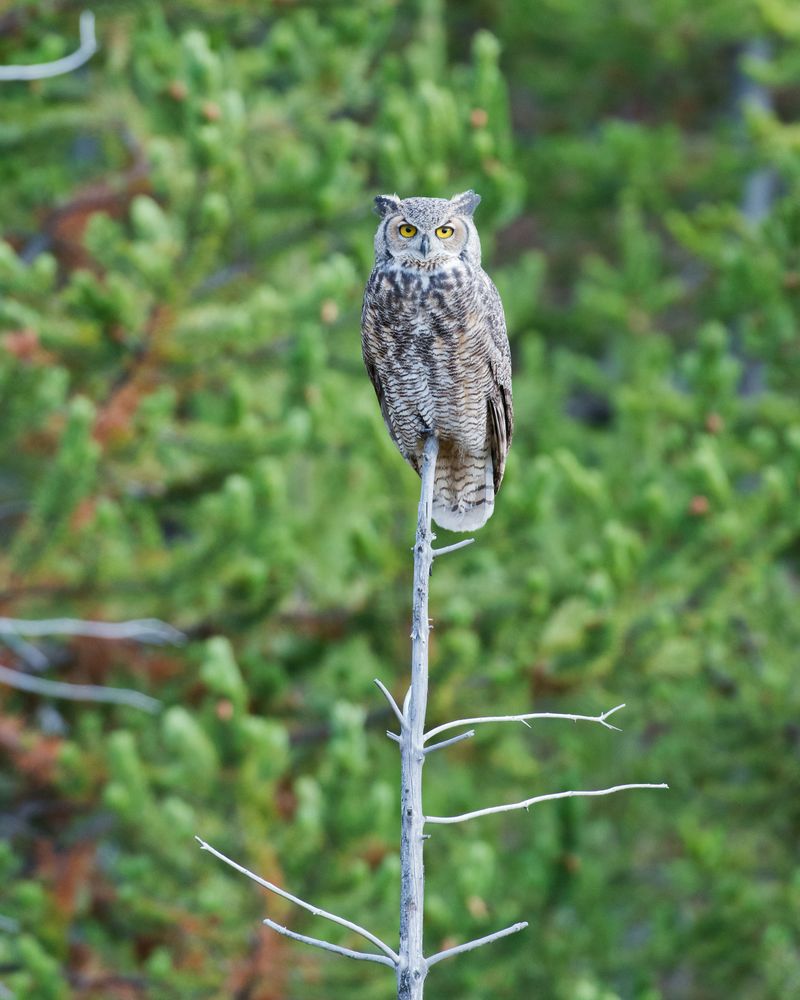
The great horned owl, with its iconic tufted ‘horns’ and intense gaze, rules the nocturnal skies of Wyoming. As a formidable predator, it plays a crucial role in controlling rodent populations, showcasing nature’s balance.
These owls have an impressive wingspan and silent flight, allowing them to swoop down on unsuspecting prey with precision. Their haunting hoots echo through the night, a sound both eerie and fascinating.
Encountering a great horned owl is a magical experience, a reminder of the mysteries that unfold under the cloak of darkness. They embody the wisdom and allure of the natural world.
American Beaver
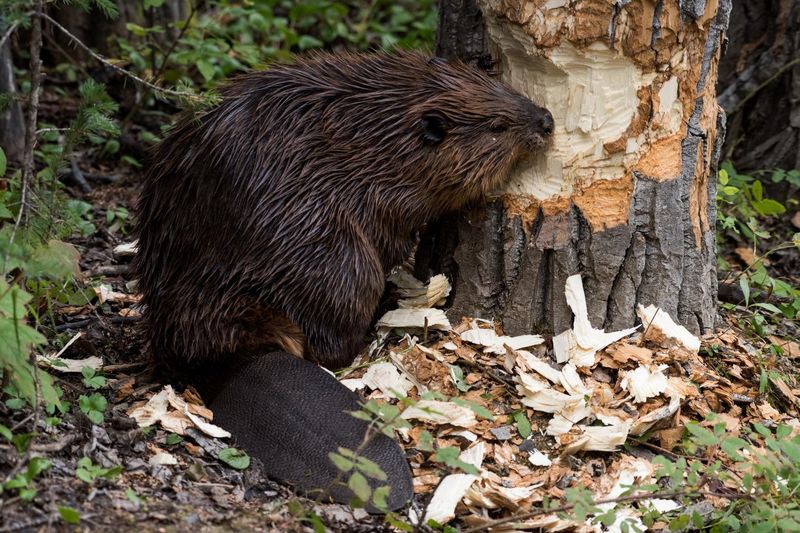
The American beaver, nature’s engineer, diligently shapes Wyoming’s waterways with its dam-building prowess. These industrious rodents are recognizable by their flat tails and strong, chisel-like teeth.
Beavers play a crucial ecological role, creating wetlands that support diverse wildlife. Their lodges, constructed from branches and mud, provide shelter and protection. Watching a beaver at work is a captivating sight, as they skillfully maneuver logs and build with precision.
These creatures exemplify teamwork and perseverance, transforming landscapes and contributing to biodiversity. Protecting beavers ensures the health of aquatic ecosystems, highlighting their importance in nature’s design.
Bighorn Sheep
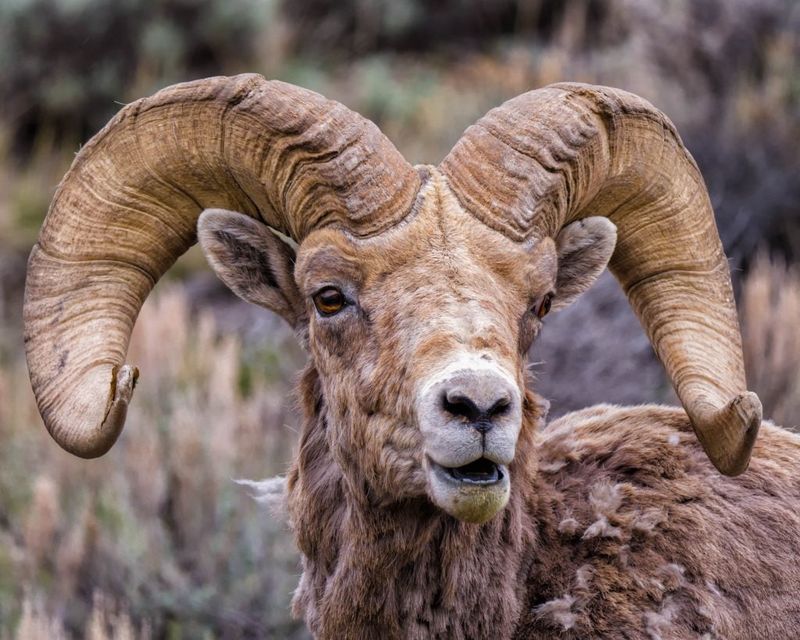
Bighorn sheep, with their impressive curved horns, are a symbol of agility and strength in Wyoming’s mountainous regions. These sure-footed climbers navigate steep terrains with ease, often seen perched on rocky cliffs.
Males, or rams, engage in dramatic head-butting contests during the mating season, a spectacle of nature’s raw power. Their keen sense of balance and acute vision are crucial for survival in these harsh environments.
Spotting a bighorn sheep is a thrilling experience, as they blend seamlessly into their rugged surroundings. Their presence is a testament to the wild beauty and resilience of Wyoming’s landscapes.
Red Fox
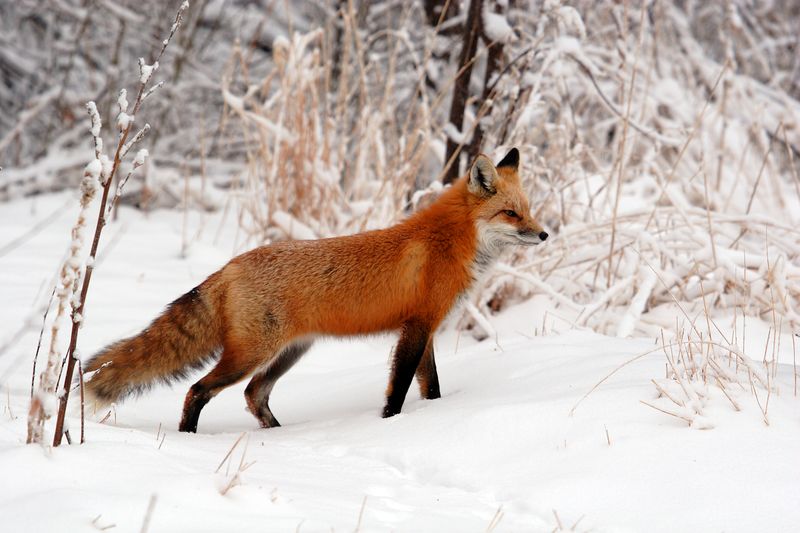
The red fox, with its bushy tail and cunning eyes, is a charismatic resident of Wyoming’s diverse habitats. These adaptable predators are known for their intelligence and agility, often seen trotting gracefully across snowy fields.
Red foxes are solitary hunters, using their keen sense of smell and hearing to locate prey. Their vibrant red coats provide a striking contrast against the winter landscape, making them a favorite subject for wildlife photographers.
Observing a red fox in action is a delightful encounter, offering a glimpse into the cunning and resourcefulness that define these fascinating creatures.
Sandhill Crane
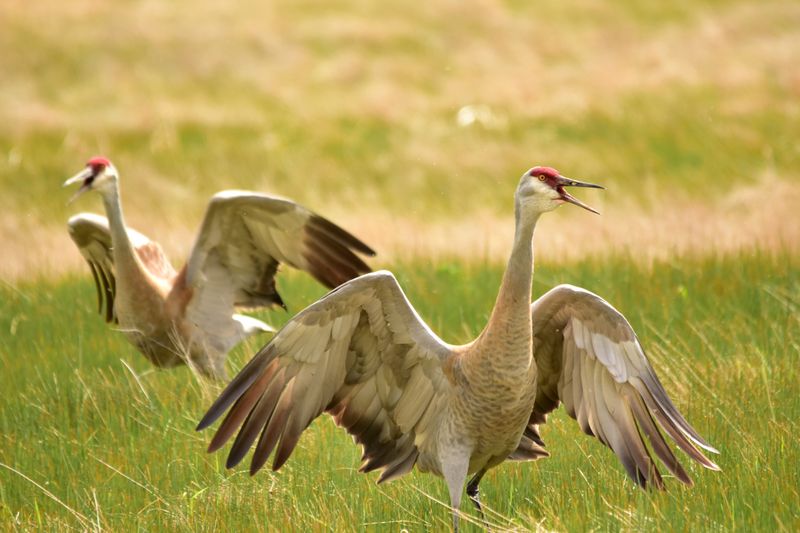
The sandhill crane, with its elegant stature and distinctive call, graces the wetlands and meadows of Wyoming. These birds are renowned for their elaborate courtship dances, a graceful display of synchrony and rhythm.
With long legs and necks, sandhill cranes are often seen wading through shallow waters, searching for food. Their migrations are a remarkable journey, covering thousands of miles across continents.
Witnessing their dance is a celebration of nature’s beauty and complexity, a reminder of the intricate connections that bind the natural world. Sandhill cranes embody the grace and harmony of life in Wyoming’s wilds.
River Otter
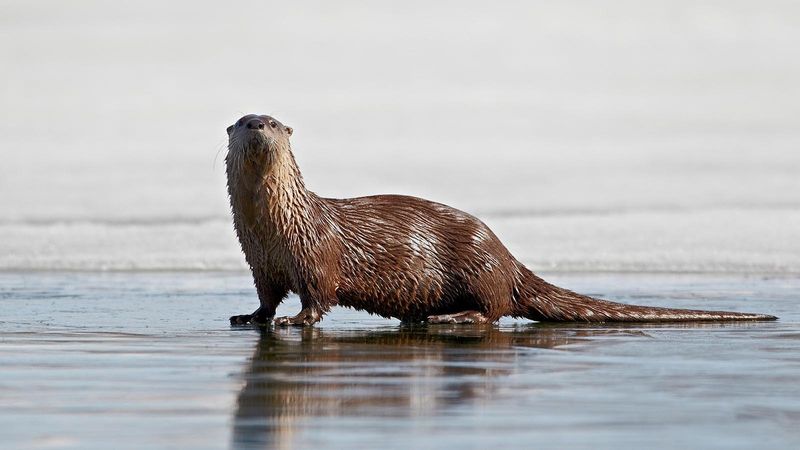
River otters bring a touch of playfulness to Wyoming’s waterways, with their sleek bodies and boundless energy. These aquatic mammals are expert swimmers, often seen gliding effortlessly through streams and rivers.
Otters have a social nature, frequently spotted frolicking in groups, showcasing their playful antics. Their diet mainly consists of fish, which they catch with remarkable agility.
Watching a river otter at play is a delight, offering a glimpse into the joy and vibrancy of the natural world. Protecting these charismatic creatures ensures the health of Wyoming’s aquatic ecosystems, highlighting their ecological significance.
Trumpeter Swan
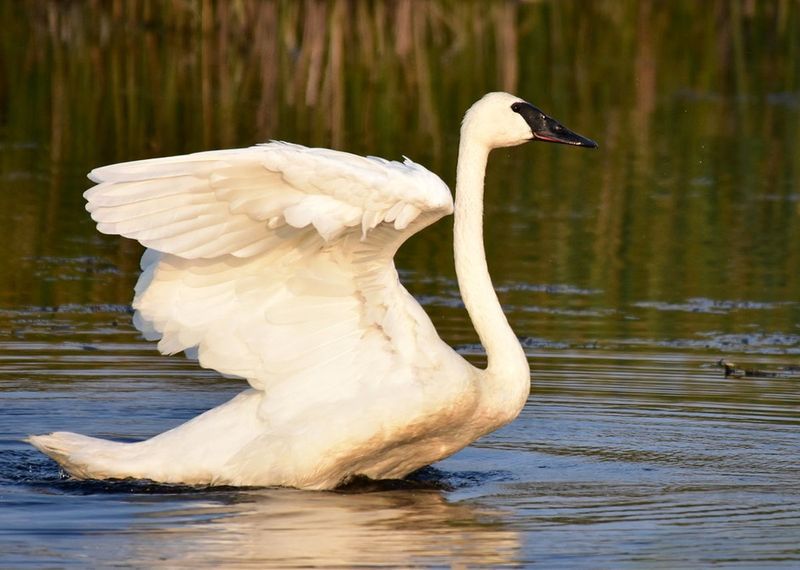
The trumpeter swan, with its striking white plumage and melodic call, is a symbol of grace on Wyoming’s lakes and ponds. These majestic birds are the largest of North American waterfowl, with wingspans stretching up to 10 feet.
Trumpeter swans are often seen gliding gracefully across calm waters, their reflections creating a mirror image. Their presence is a testament to successful conservation efforts, as they were once threatened by habitat loss and overhunting.
The haunting call of a trumpeter swan resonates through the air, a beautiful reminder of nature’s melodies and the importance of preserving wetland habitats.
Coyote
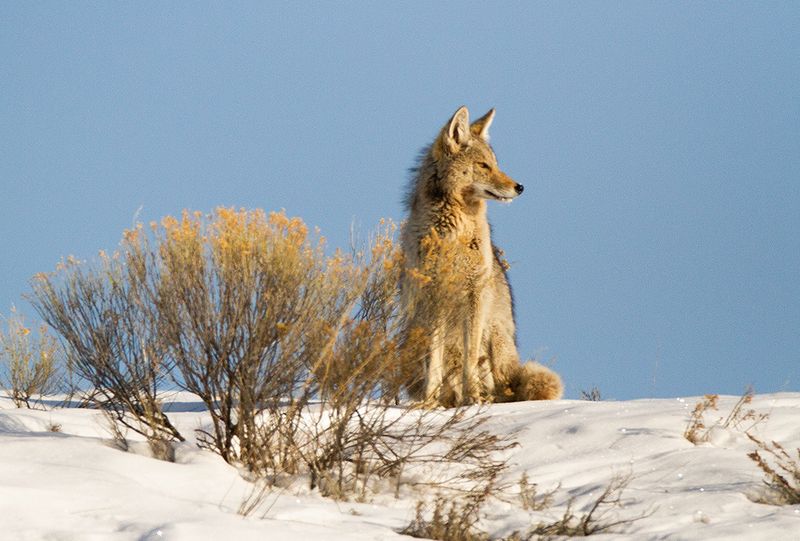
The coyote, known for its intelligence and adaptability, is a common yet fascinating sight in Wyoming’s landscapes. These canines are highly adaptable, thriving in various environments, from open plains to urban areas.
Coyotes are skilled hunters, often working in pairs or small groups to track down prey. Their howls fill the night air, a chorus that speaks to the wild heart of the land.
Observing a coyote in its natural habitat reveals a creature of resilience and cunning, embodying the spirit of survival. Their presence highlights the dynamic balance of ecosystems in Wyoming.
Peregrine Falcon
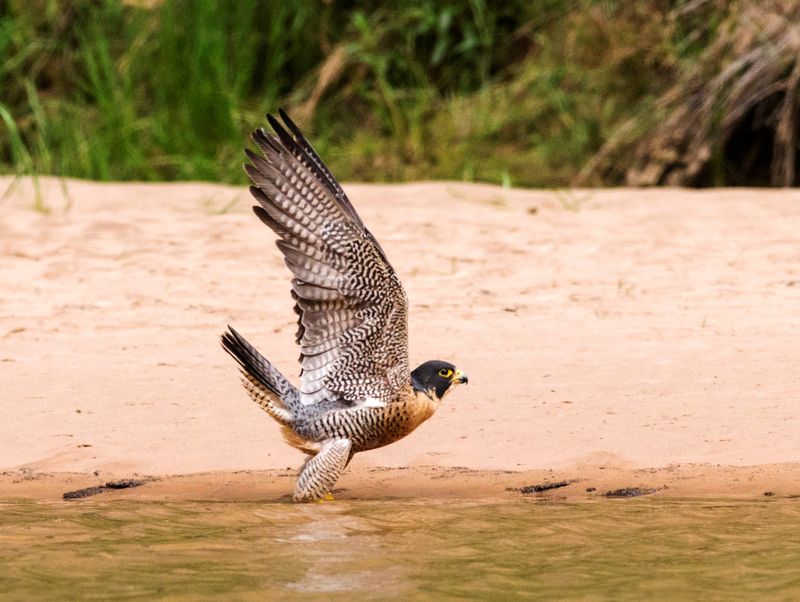
The peregrine falcon, renowned for its incredible speed, soars through the Wyoming skies with unmatched grace. These birds of prey are the fastest animals on the planet, capable of reaching speeds over 240 miles per hour during their hunting stoop.
With sharp talons and keen eyesight, peregrines are formidable hunters, often seen diving to snatch prey mid-air. Their adaptation to diverse environments, including urban areas, speaks to their resilience and versatility.
Watching a peregrine in flight is a breathtaking spectacle, a testament to nature’s engineering marvels. Their presence underscores the importance of preserving bird habitats across the state.
Northern Goshawk
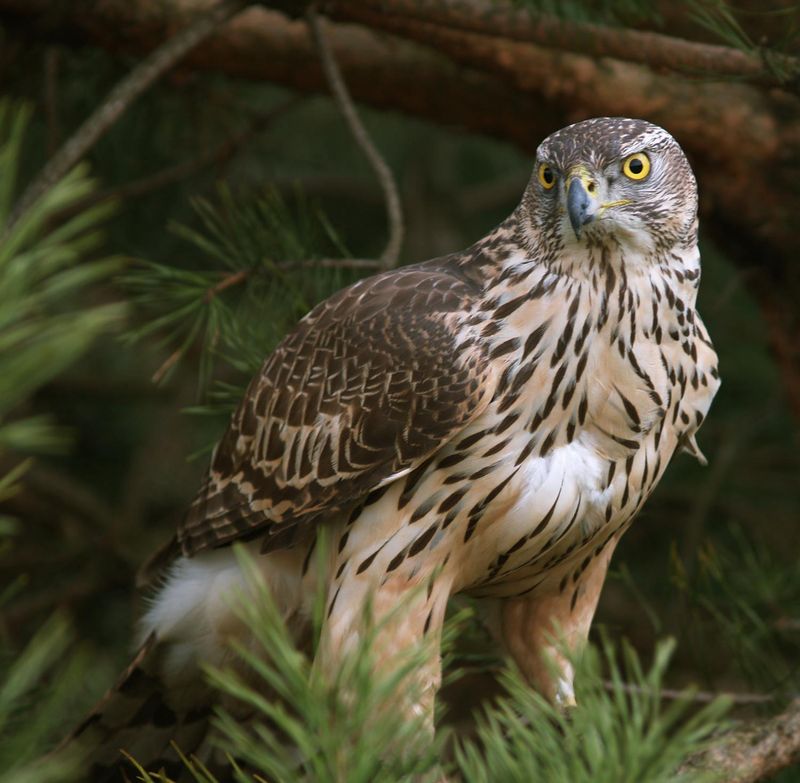
The northern goshawk, with its fierce gaze and powerful build, commands respect in Wyoming’s forests. These raptors are skilled hunters, known for their agility and speed, often seen darting through dense woodlands.
Goshawks have a distinctive white eyebrow and a barred gray chest, features that aid in their camouflage. Their hunting prowess is unmatched, making them apex predators in their habitat.
Spotting a northern goshawk in action is a thrilling experience, offering a glimpse into the raw power and precision of nature’s hunters. They play a critical role in controlling prey populations, maintaining ecological balance.
Yellowstone Cutthroat Trout
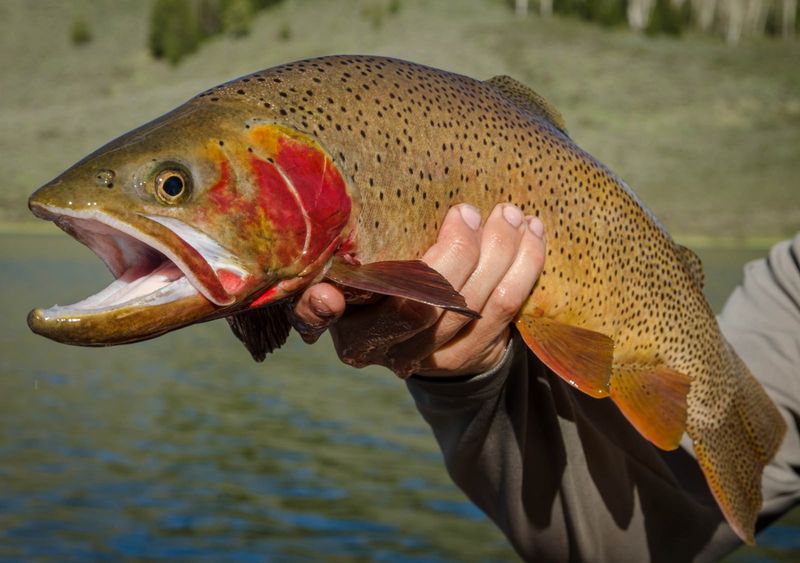
The Yellowstone cutthroat trout, with its vibrant colors and distinctive red throat markings, thrives in the clear rivers of Wyoming. This native fish is highly prized by anglers for its beauty and fighting spirit.
Cutthroat trout are an indicator species, reflecting the health of aquatic ecosystems. Their presence signifies clean, cold water, essential for their survival and reproduction.
Fishing for these trout is a cherished pastime, offering a chance to connect with the pristine wilderness of Wyoming. Conservation efforts are crucial to preserve their habitat, ensuring future generations can enjoy their splendor.
Golden Eagle
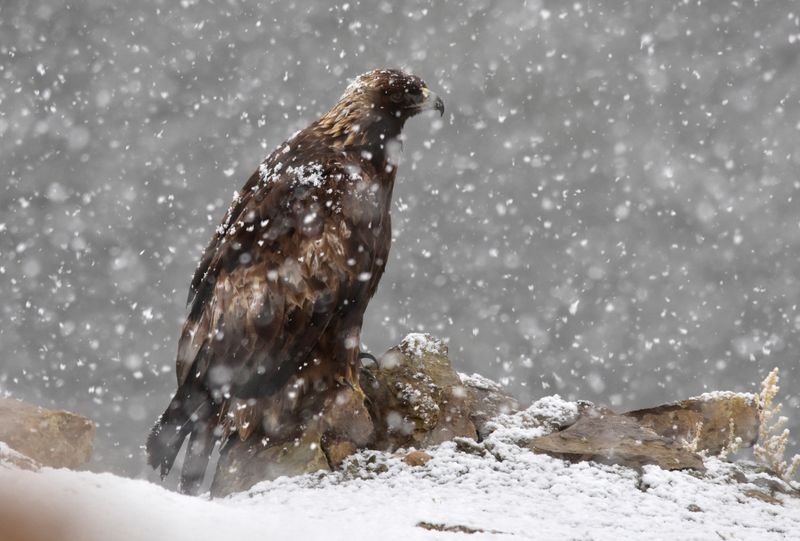
The golden eagle, with its powerful wings and keen vision, reigns supreme in the skies over Wyoming. These majestic raptors are known for their hunting prowess, preying on small mammals and other birds.
Golden eagles are often seen soaring high above the mountains, using thermal updrafts to conserve energy while they scan the land for prey. Their nests, built on cliffs or tall trees, provide a strategic vantage point.
Witnessing a golden eagle in flight is a humbling experience, a reminder of the grandeur and freedom of the wild. Their presence is a symbol of the untamed beauty of Wyoming’s landscapes.
Mule Deer
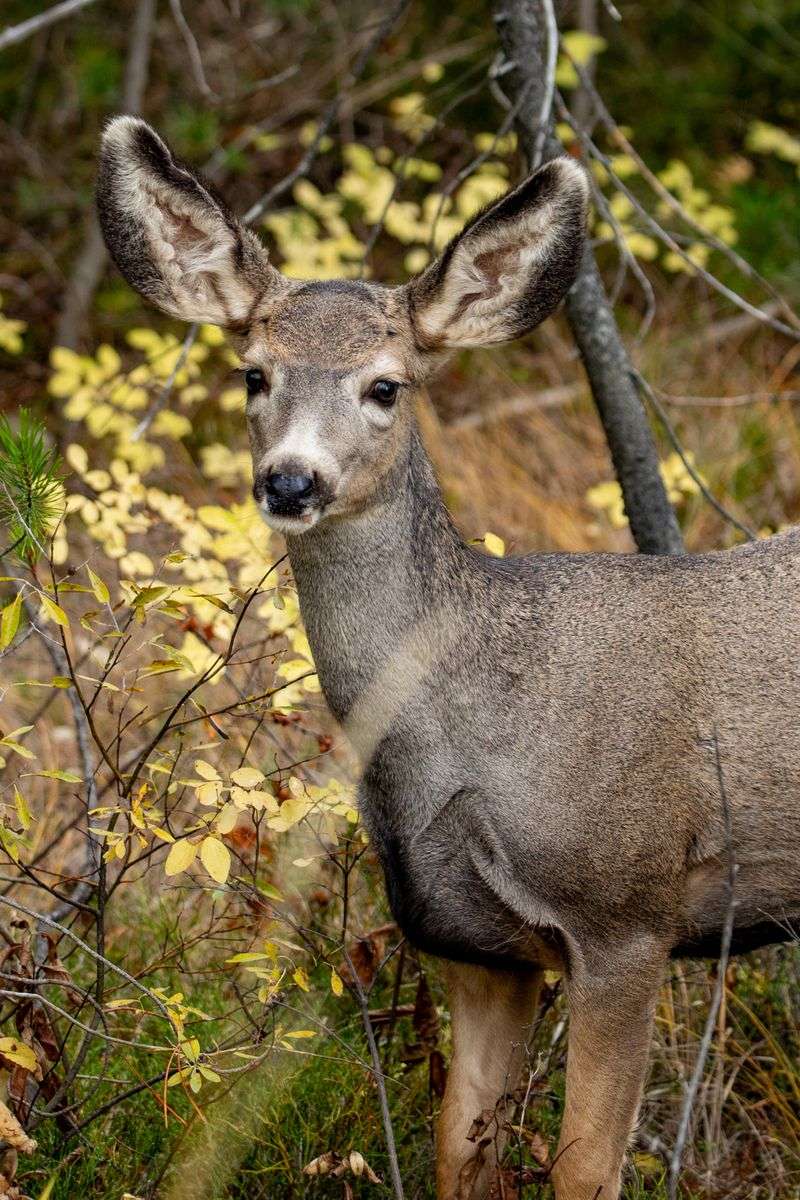
Mule deer, with their large ears and graceful demeanor, are a common sight in the meadows and forests of Wyoming. These deer are highly adaptable, thriving in a variety of habitats across the state.
Known for their distinctive bounding gait, mule deer are agile and swift, capable of navigating rugged terrain with ease. Their diet consists mainly of shrubs and grasses, playing a vital role in shaping the vegetation community.
Observing a mule deer in its natural setting is a tranquil experience, offering a glimpse into the elegance and adaptability that define these creatures. Their presence enriches the wildlife tapestry of Wyoming.
Black Bear
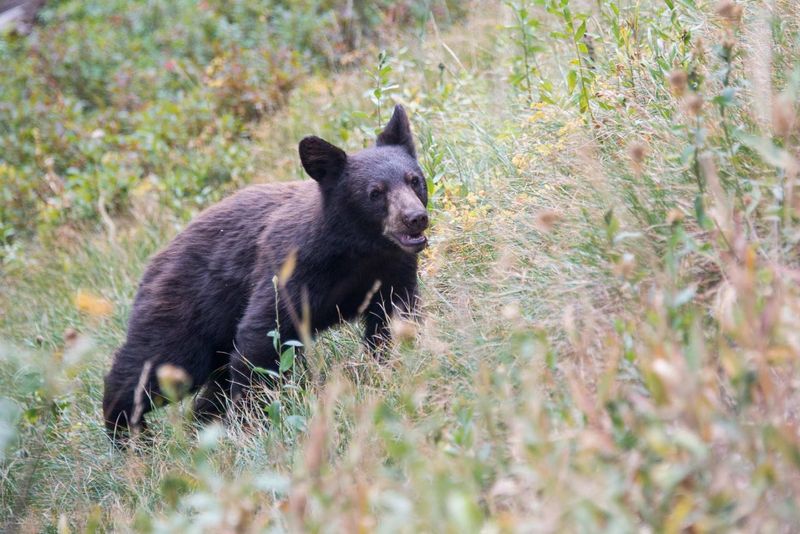
The black bear, with its glossy coat and curious nature, roams the forests of Wyoming, embodying both majesty and mystery. Unlike their grizzly cousins, black bears are generally more reclusive, often seen foraging for berries and insects.
These omnivores play an important role in seed dispersal, contributing to forest regeneration. Black bears are skilled climbers, using their strength and agility to navigate trees in search of food.
Encountering a black bear in the wild is a memorable experience, offering a glimpse into the hidden world of the forest. Their presence highlights the rich biodiversity of Wyoming’s wilderness.

